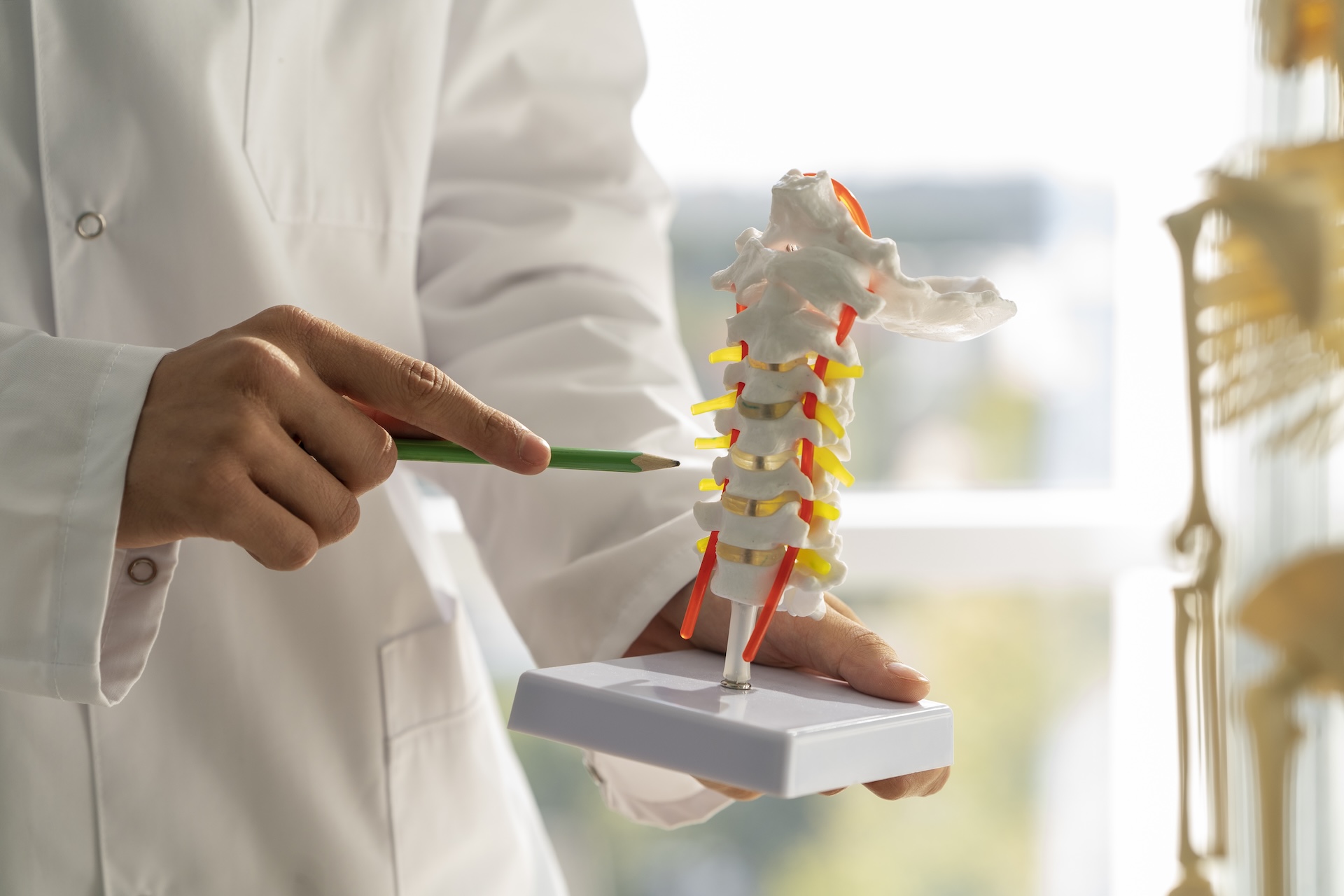Disc degeneration is a common condition that affects many people, especially as they age. This condition can be debilitating and painful, significantly affecting the quality of life of those who suffer from it.
However, there are several treatments available to alleviate pain and improve functionality. In some cases, when conservative treatments are not effective, spinal arthrodesis, or spinal fusion surgery, may be a recommended option. It’s important for you to understand what disc degeneration is, how it is treated, and when it might be necessary to consider spinal arthrodesis, so you can make informed decisions about your health.
What is disc degeneration?
The spine consists of vertebrae, between which are intervertebral discs that act as shock absorbers, cushioning the impacts it receives during daily activities.
Over time, these discs can start to wear down due to aging, overuse, or injury. This process is known as disc degeneration.
As the discs lose their cushioning ability, they can become thinner, less flexible, and prone to developing small cracks. This can lead to pain, stiffness, and limitations in movement.
In some cases, disc degeneration can lead to complications such as herniated discs, spondylolysis, or spinal stenosis, which compress the nerves of the spine, causing pain radiating to the limbs.
Conservative treatments for disc degeneration
Disc degeneration does not always require surgery. In fact, most people with this condition find relief with non-surgical treatments, which include:
- Physical therapy: specific exercises and manual therapy can help improve flexibility, strengthen supporting muscles, and relieve pressure on the affected discs.
- Pain medications: nonsteroidal anti-inflammatory drugs (NSAIDs), such as ibuprofen, or stronger medications like opioid analgesics, may be temporarily prescribed to manage severe pain.
- Epidural steroid injections: these injections are used to reduce inflammation and relieve pain caused by nerve compression, especially in cases of herniated discs or spinal stenosis.
- Alternative therapies: methods such as acupuncture or chiropractic care are often used as part of an integrated approach to relieve chronic spinal pain.
When to consider spinal arthrodesis
Despite the benefits offered by conservative treatments, not all patients achieve the relief they need. In severe cases where the pain is chronic and disc degeneration has significantly affected the quality of life, surgery specifically spinal arthrodesis may be necessary.
Spinal arthrodesis is a surgical procedure designed to fuse two or more vertebrae, eliminating movement in the affected area. This process stabilizes the spine and reduces pain. The decision to proceed with this surgery is based on several factors, such as:
- Persistent debilitating pain: if the pain is chronic and severe, affecting the patient’s ability to carry out normal daily activities despite trying various conservative treatments, spinal arthrodesis may be an effective solution.
- Spinal instability: in some cases, disc degeneration can cause instability in the spine, increasing the risk of nerve compression or deformities.
- Nerve compression: if disc degeneration has resulted in significant compression of the spinal nerves, leading to symptoms such as radiating pain, numbness, or weakness in the limbs, surgery may be required to alleviate the pressure on the nerves and prevent permanent damage.
- Spinal deformities: some degenerative conditions can lead to spinal deformities, such as degenerative scoliosis, which can also be treated with spinal arthrodesis.
Relationship between disc degeneration and fusion surgery
Spinal arthrodesis, a procedure considered when disc degeneration has significantly altered the spine’s anatomy, offers a beacon of hope for those suffering from chronic pain and instability. The surgery’s goal is to halt movement in the affected segment, thereby reducing pain and stabilizing the spine. While it may seem drastic, this option has brought significant relief to many patients who had not found solace in other therapies.
The fusion procedure involves the use of bone grafts and often implants such as screws and rods to hold the vertebrae in the correct position while the bone fuses to form a solid structure. This process can take several months, and the success of the surgery largely depends on factors such as adherence to postoperative recommendations and rehabilitation.
In conclusion, while disc degeneration can be a painful and debilitating condition, there are numerous treatment options available. If conservative treatments fail to provide relief, spinal arthrodesis stands as an effective option to restore spinal stability and enhance the patient’s quality of life. It’s crucial to consult a spine specialist, who can guide you in determining the most suitable approach based on the specific characteristics of your condition, providing you with the reassurance you need.
A choice for medical excellence
At Blue Ribbon, we are a growing medical tourism network, connected with top-level doctors and hospitals in Mexico. Our aim is to provide our clients with access to specialized medical procedures at a significantly more affordable price than in the United States, without compromising on medical quality. This affordability ensures that you can receive the best medical care without financial strain, giving you peace of mind.
From orthopedic procedures, urology, and ophthalmology to plastic surgery and bariatric medicine, we offer a wide range of medical specialties. Our dedicated coordinators are committed to guiding and supporting you throughout the entire process, ensuring a seamless and comfortable experience during these advanced medical procedures.
If you are interested in undergoing any medical procedures we offer or want to learn more about the Blue Ribbon experience, please contact us at 213-9953-029 or via email at contact@blueribbonmedicalnetwork.com. We are here to answer any questions you may have.


